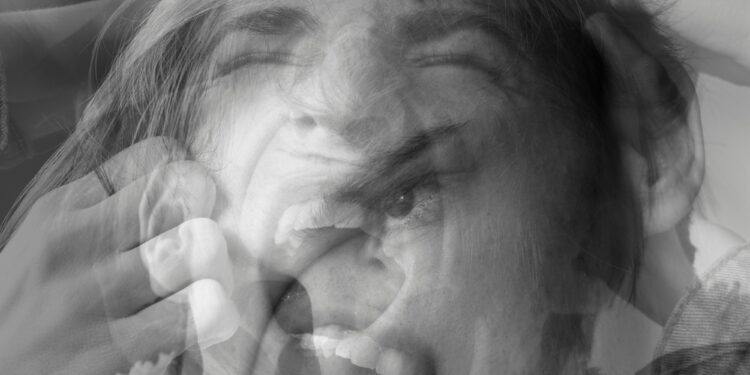Healthcare, as we understand it today, is defined through broad statistics. Whether it may be trends in disease prevalence or general cost burdens, the numbers define how we look at healthcare overall.
This fails to describe the individual patient experience. For the patient, healthcare is gleaned through the unique day to day perceptions: struggling to find the right pharmacy that has the medications at an affordable price, balancing wait times on the phone with insurance companies with the need to prepare dinner for the family, calculating how many days to go without medications in order to fit the family budget for groceries, and on it goes.
The numbers fail to capture what patients see on a daily basis – the existential angst of being a patient in today’s world of healthcare.
For patients, those critical moments are the most defining when it comes to their overall health management. Many believe the conversation during the doctor’s visit or reviewing the latest lab results might be the most impactful aspects of the patient journey. That couldn’t be further from the truth.
What determines a patient’s long term clinical outcome is the silent moments of introspection, the unspoken stress of languishing over the unknowns – the changing cost of medications, the changing coverage plans, the missed doctor’s appointments, the need for medication refills.
It’s less about clinical care and more about the narrative the patients tell themselves as they navigate their clinical journey. Healthcare might be characterized through statistics, but it’s lived through the patient stories. Let’s see three such examples.
John doesn’t know how to get help
John, a 57-year-old Caucasian male, has been living with a disability for the past twenty years due to a work injury he sustained at a steel plant. Recently, he experienced an unfortunate loss with the passing of his wife, causing him to turn to alcohol as a coping mechanism. Unfortunately, his increased alcohol consumption, coupled with his use of anti-inflammatory medications, has led to gastric bleeding. Now, John faces a challenge as he struggles to have his gastric treatment covered by his current insurance plan. The insurer argues that his gastric condition is not related to his work-related disability. Despite his desperate need for medical coverage, John finds himself caught in a complex situation where his undisclosed struggles with alcoholism are affecting his disability coverage.
To find a solution to this predicament, John has a few potential workarounds. He could explore the option of obtaining additional insurance coverage, albeit at a higher cost, that would include his new gastric condition. Another option would be for John to come to terms with his alcoholism and actively seek treatment for it. By acknowledging his addiction and addressing it head-on, he may be able to find a way to manage both his alcoholism and his gastric condition effectively. Additionally, John could attempt to convince his work-related insurance provider to reconsider their stance and cover his gastric condition, emphasizing the detrimental impact his work injury has had on his overall health.
The impact of John’s situation extends beyond his personal struggles. It sheds light on the larger issue of substance dependency, which often goes untreated and can greatly affect an individual’s quality of care. Understanding the interplay between substance abuse and medical conditions is an important aspect of providing comprehensive healthcare. Many chronic conditions and complications, like John’s gastric bleeding, can be worsened by lifestyle choices. However, patients frequently face challenges in integrating their behavioral patterns with their disease management. This broader pattern highlights the need for a holistic approach to healthcare that addresses both physical and mental well-being, enabling patients to effectively manage both their conditions and their lifestyle choices.
Maria wants what she can’t have
Maria, a 43-year-old Hispanic female who struggles with obesity, has recently been diagnosed with diabetes. Seeking a solution that addresses both conditions, she is interested in trying one of the newer medications that not only treats her diabetes but also helps her lose weight. However, her hopes are dashed when she discovers that her insurance does not cover the cost of these medications. Left with a challenging decision, Maria must weigh the potential benefits of purchasing the medications out of pocket against the risk of being unable to cover her monthly expenses.
Maria’s main desire is to receive medications that effectively address both her obesity and diabetes. Unfortunately, the out-of-pocket expenses for the sought-after medication become a significant obstacle in her path. This financial roadblock forces her to consider potential workarounds in order to obtain the desired treatment. She could petition her insurance provider for coverage, although this may prove to be an uphill battle. Alternatively, she could explore the option of working additional hours to generate the necessary income to afford the medication. Another possibility, albeit one with potential long-term financial implications, is to take out additional credit to cover the cost.
This predicament faced by Maria highlights a concerning trend in healthcare. Many popular drugs, like the one she desires, are both costly and not covered by insurance. However, these medications are often heavily marketed, garnering the interest of patients like Maria who long for effective solutions. This disconnect between desired care or medications and what insurance companies are willing to cover places many patients in difficult financial situations.
Overall, Maria’s situation reflects the broader pattern of individuals being caught in a Catch-22 scenario when it comes to their healthcare. The disconnect between the desired treatments and insurance coverage can often lead to financial hardships for patients who are left to choose between their health and their financial stability.
Lynn is forced to choose
‘Lynn’ is a 24-year-old female who had her world shattered after being sexually assaulted by a co-worker following a holiday party. Her life took another unexpected turn when she realized she had missed multiple menstruations. Lynn had a history of endometriosis, a condition that caused her to experience excessive bleeding after months of no discharge or menstruation. Filled with anxiety, she decided to take a pregnancy test, only to discover that she was carrying an unwanted child. Overwhelmed by the news, Lynn sought guidance and support at a walk-in OB/GYN clinic located at a local community college. The results from her blood work confirmed the pregnancy but also revealed genetic abnormalities, further complicating an already difficult situation. Now faced with a heart-wrenching decision, Lynn finds herself having to weigh the risks and consequences of proceeding with a high-risk pregnancy or choosing to seek an abortion.
In the midst of her turmoil, Lynn is stuck in an emotional battle where she does not know what she truly wants. She feels trapped in a lose-lose situation, grappling with conflicting emotions and desires. The shame and stigma attached to getting an abortion haunt her thoughts, while the fear of the potential risks and complications that come with a high-risk pregnancy loom over her. The societal pressure to conform to expectations weighs heavily on her, leaving her feeling alone and isolated in her decision-making process.
Despite feeling trapped, Lynn is not without potential workarounds. She could reach out to her parents for support and guidance, even if it means enduring the familial shame that may come with such a decision. Alternatively, she could choose to go ahead with an abortion and face the condemnation of those who view it as a sinful act. Lastly, Lynn could choose to risk her own life by going through with the pregnancy, navigating the challenging journey of becoming a mother under circumstances she never envisioned.
The impact of Lynn’s situation extends beyond her personal struggle. It sheds light on the broader issue of how society tends to approach and judge abortions. Often, discussions surrounding abortion focus solely on judicial rulings and health legislation, neglecting the complex narratives and emotions experienced by individuals like Lynn who are faced with these decisions. It highlights the disconnect between societal perception and the thoughts running through the mind of a woman actually considering an abortion. Through stories like Lynn’s, we are reminded of the importance of empathetic understanding and support for those navigating through such deeply personal decisions.















